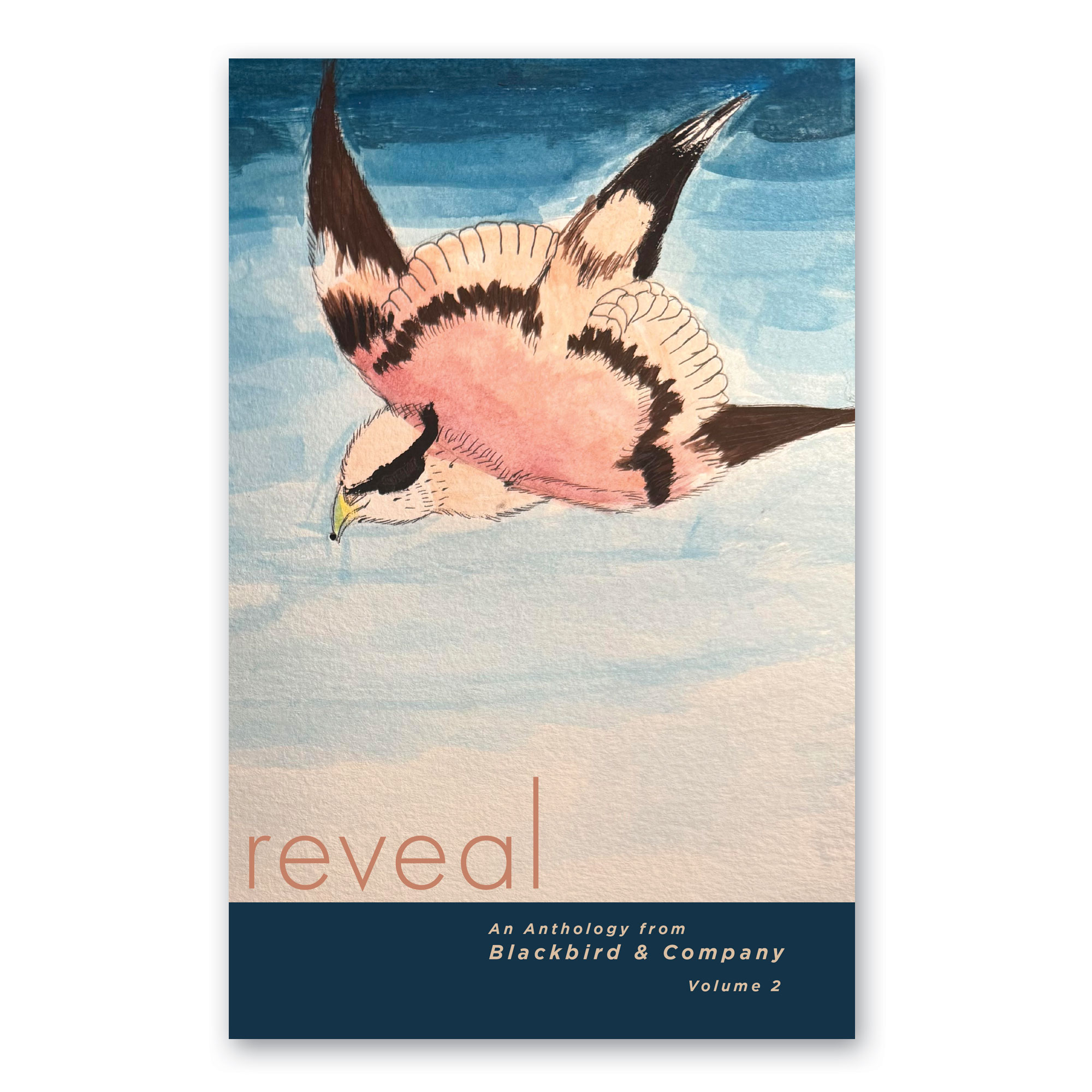
A crisp nip in the air, leaves dancing from green to yellow to orange, the scratch of claw on earth as squirrels dig hiding places for acorns—this can only mean one thing: Thanksgiving fast approaches!
If you ask me what I’m thankful for during this season, and if I had been reflecting on Reveal (Blackbird & Company’s annual student anthology), I would probably say, “amalgamation.”
What a pretentious answer, you think but are too polite to say aloud.
I would explain: an amalgamation is a combining of multiple elements to create a new, unique blend. When the elements come into contact with each other, they change to create something new, like iron and carbon superheating together to form steel. Or a slightly different but related concept—as Aristotle said, “The whole is greater than the sum of the parts,” which emphasizes the power of unity over individual strength.
How does all of this relate to Reveal? Reveal represents an amalgamation of Blackbird & Company writers, a combination of work that elevates each piece to form an inspiring whole. Reveal doesn’t represent one person’s foray into the literary world—rather, Reveal is a communal effort on the part of young writers and scholars who insist that their voices matter, that they have big ideas worth sharing.
By combining our talents in ways that compliment and inspire each other, we can together create something greater than any of us could accomplish individually.
So what am I thankful for?
I’m thankful to be a part of a community that uses writing as a medium for connection, as a way to give voice to the whisperings of the soul. When we all bring our talents to the table, the amalgamation of our art is greater than what any of us could create alone.
~Claire
